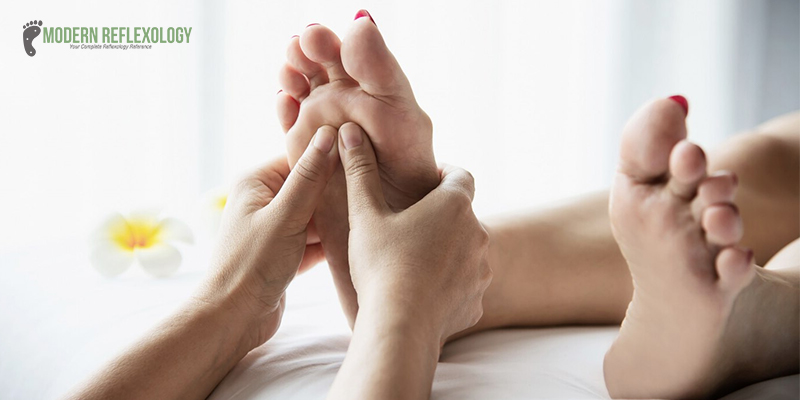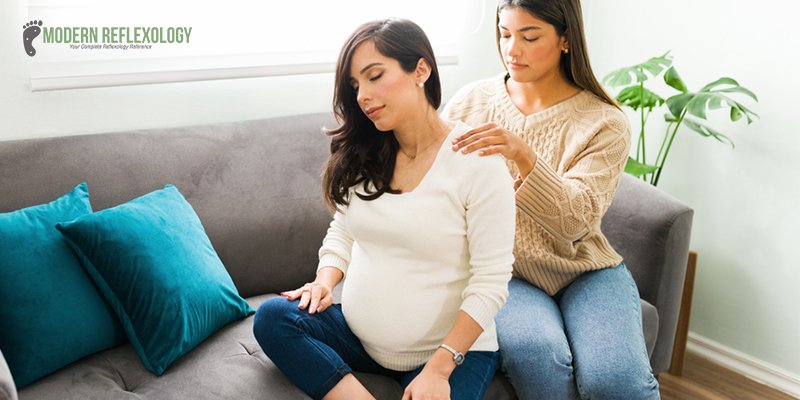Although the nine months of pregnancy are typically portrayed as blissful, the physical reality of carrying a human child frequently involves a variety of discomforts that a massage therapist’s skill can naturally help. Therapists who wish to work with pregnant clients must understand the best ways that massage therapy can support them, as well as the precautions and contraindications that will assist in guiding each massage session. Despite the need for more excellent knowledge and awareness regarding pregnancy, a large body of research demonstrates the numerous benefits of massage treatment during pregnancy, labor, and the postpartum phase.
What is Prenatal Massage Therapy?
A particular massage designed especially for pregnant women is called prenatal massage is designed to assist ease the aches and strains associated with pregnancy. Typically, the massage targets the body parts most impacted by pregnancy. This encompasses the calves, feet, lower back, mid back, and stomach.
Prenatal massages, sometimes called pregnancy massages, are intended to ease the pain and discomfort that can develop in different body parts during pregnancy. During the first trimester, women should avoid having regular massages. Pregnant women should undergo a safe and secure prenatal massage during the second and third trimesters. The therapist should accommodate the woman’s shifting body form using a specific table. Prenatal massages can occasionally be given while the expectant mother is on her side. Typically, a prenatal massage concentrates on the body parts most impacted by pregnancy. A prenatal massage should ease tightness in your lower back, feet, and shoulders and leave you feeling more attuned and at ease.
In addition to pain alleviation, prenatal massage has other potential advantages. According to studies and anecdotal evidence, additional benefits include less stress, better sleep, and even a stronger bond with your child.
Types of Prenatal Massage Therapy
Therapists typically employ a variety of prenatal massage techniques. They are as follows:
- Swedish bodywork.
- Therapy using myofascial release.
- Craniosacral medicine.
They’re all incredibly successful at relieving discomfort and pain. Though they move slowly and with great gentleness, they work quickly.
Is Massage Therapy Safe During Pregnancy?
Yes, it is safe. Contrary to popular belief, massage therapy during pregnancy is safe. A prenatal massage is recommended for your well-being if you’ve crossed your first trimester. Because pregnancy massages can produce nausea and vertigo, it is typically not advised for women who are pregnant or expecting a child. Be cautious to consult your doctor before receiving a prenatal massage.
Make sure your massage therapist receives professional training in postures that will support and comfort your body. In contrast to typical massages, your massage therapist won’t apply deep pressure to your legs or abdomen, and they won’t hit specific trigger points that could set you off. A prenatal massage attends to your specific needs while concentrating on easing cramping and discomfort.
Prenatal Massage Therapy Benefits
Among the many advantages of prenatal massage is its ability to relieve discomfort and control specific hormone levels. Hormones that make you slightly happier, such as estrogen and serotonin, can be regulated with massage. This can assist you in managing anxiety and sadness during pregnancy and the postpartum phase, as well as make you feel happier. These advantages might also endure for a long time. Improved labor outcomes may also result from massage therapy pregnancy increased oxytocin synthesis. Oxytocin has been shown to influence your bonding with your kid and to help with birth contractions.
Additional advantages consist of:
- Eases pain.
- Better sleep.
- Alleviating sleeplessness.
- Lowering anxiety and tension.
- Lessens the discomfort of childbirth.
- Alleviating depression.
Side Effects of Prenatal Massage Therapy
Undoubtedly, there are quite a few benefits of prenatal massage therapy. However, it is always essential to keep in mind that this therapy could come with specific side effects due to plenty of factors.
Regular massage therapy carries the risk of miscarriage or preeclampsia. A placenta accreta or an abruption are examples of potential major problems. Swelling, or edema, may also occur in a particular place, mainly if you receive massages frequently. Variations in blood pressure are also possible. Occasionally, receiving a massage with increased pressure can raise your blood pressure. A light-pressure massage can lower blood pressure. It’s especially crucial to watch out for changes in blood pressure if you’re having trouble controlling gestational diabetes. Massage therapy for pregnancy is generally valuable and safe. There may be specific concerns if your massage therapist is inexperienced, or you don’t know your medical history. Many women’s reluctance to receive massages during this time, as well as some therapists’ hesitation to provide them, stem from confusing information and contradictory advice.
Tips to keep in Mind While Undergoing Prenatal Massage Therapy:
- Avoid massaging your abdomen deeply, especially during the first trimester.
- After 16 weeks, lie on your side or at a 45-degree inclination; avoid reclining on your back for the massage.
- Not everyone should have a prenatal massage. To find out if it’s safe for you, ask your doctor.
- Sudden swelling may indicate pre-eclampsia, so massage isn’t always the best course of action.
- Steers clear of deep tissue massage on the upper arms and legs. This is because deep vein thrombosis (DVT), which can be challenging to diagnose, is more common during pregnancy.
- Some essential oils should not be used while pregnant because they are unsafe. The oils are safe to use: lavender, grapefruit, peppermint, frankincense, geranium, bergamot, and neroli.
How to Perform Prenatal Massage Therapy at Home?
Request that your spouse or a friend give you a mother’s massage at home using these techniques:
Rub Your Feet Gently

Your partner can begin by applying light pressure to the top of the foot, moving from the toes toward the ankle, and circling the ankle in tiny circles while using lotion for softer strokes. Next, ask them to draw small circles on the foot sole directly under the toes with both thumbs. They can alternate between moving one thumb down and the other up on the heel. They can also rub between each toe with their thumb or index finger and gently pull on each one. Avoiding the pressure area between the heel and anklebone is an intelligent idea.
Rub Your Back

Have your partner rub your back with both hands while you’re sitting up or lying on your side. Use lotion to make their hands slide more easily. They can then move on to kneading the muscles with their thumbs or the base of their hand, moving up and down, concentrating on the muscles on either side of the spine.
Rub Your Shoulders
Apply light pressure to one side of the neck, gliding between the base of the head and the top of the shoulder using the base of the hand or the pads of the fingertips. On the other hand, repeat.
Massage of the Scalp
Apply light pressure on the scalp with both hands, spreading your fingers and circling them together or apart, working from the base of the head to the hairline. Include some light face-stroking, which can be calming.
Final Words
In conclusion, when administered by a licensed and skilled therapist, prenatal massage therapy can be a helpful and secure choice for expectant mothers. It relieves some of the most prevalent pregnant discomforts, encourages relaxation, and enhances general well-being. Prioritizing safety above all else means speaking with a massage therapist before beginning any massage therapy while pregnant. It’s important to communicate throughout prenatal massage treatments. Make sure your therapist is aware of your pregnancy as well as any worries or discomforts you may be feeling. Throughout the session, a professional therapist will ensure you’re comfortable using the proper techniques and positioning.


Comments are closed